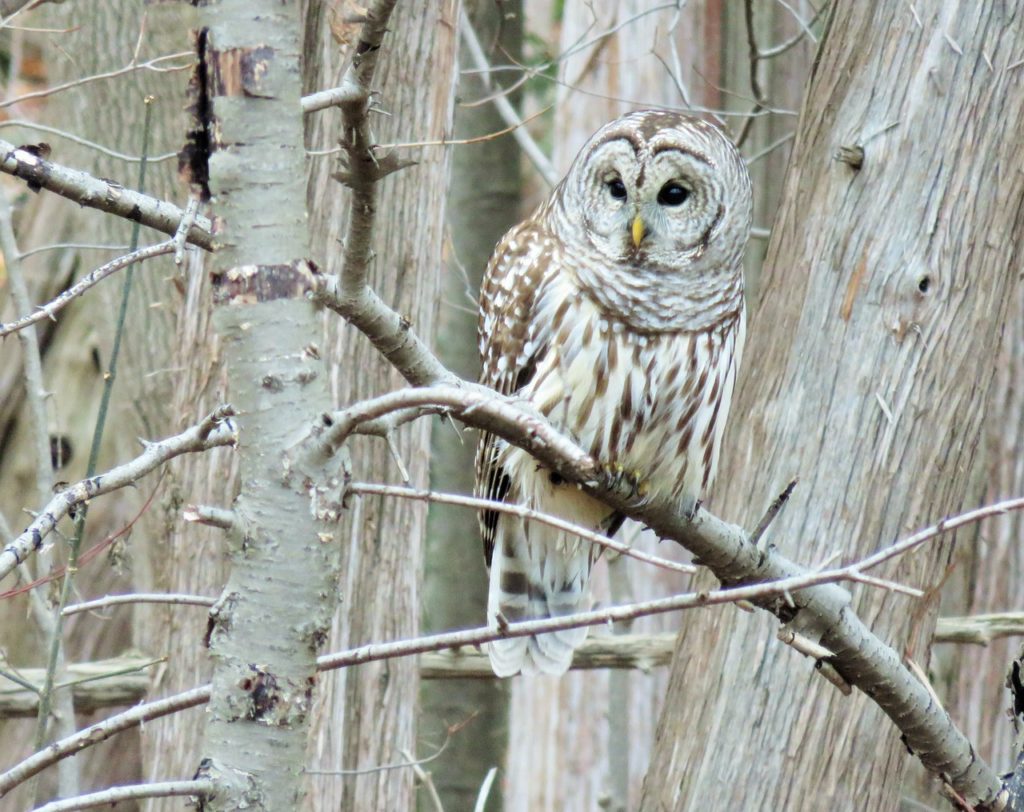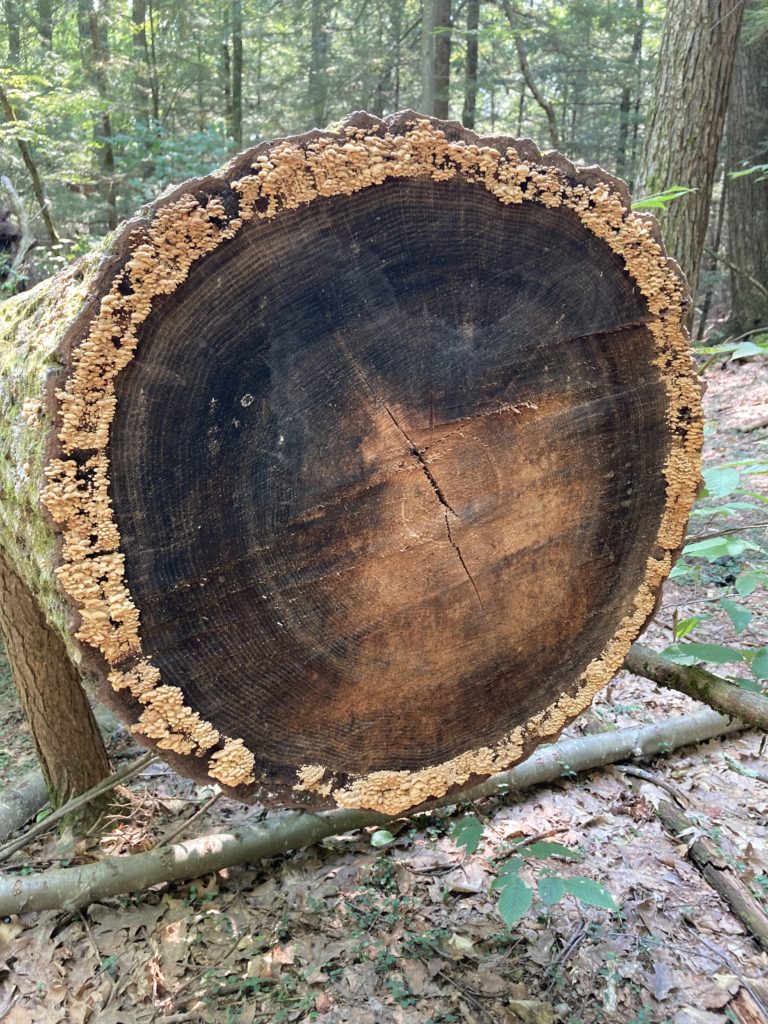Almanac: Crazy Owl Chorus

Barred Owl (Strix varia). Photo: Pixabay.com. Creative Commons
A friend and I were walking along Mt. Warner Road in North Hadley on a dark evening last week when we were startled by the hooting of a barred owl, so loud it seemed as if it were right next to us. Barred owls are hard enough to spot during the day, so we had zero chance of seeing this fellow unless it happened to fly over our heads, which it didn’t. We stopped to listen.
The typical call of a barred owl is the classic “Who cooks for you, who cooks for you all?” call. It’s similar to, but clearly distinct from, the more stuttering hoo-hoo h’HOO-hoo-hoo call of a Great Horned Owl, which is the other owl you’re likely to hear around these parts. We listened as our invisible barred owl sang away from some nearby tree and my friend even seemed to get a response when she hooted back. But then things got weird.
We heard a second barred owl, somewhat more distant. At first it was the same “Who-cooks-for-you…” call, but then the two of them let loose with a bizarre cacophony of sounds that is well captured in the following description from a field guide: “Two or more birds sometimes join in a raucous, free-wheeling chorus with a tremendous variety of barking, cackling, and gurgling notes.”
We wondered just what manner of maniacal chorus we were listening to…mating? Territory? Owl jazz improvisation? Poking into the topic once I was home I believe we were listening to two males squaring off over territory because courting and mating occurred months ago in late winter. Barred owls don’t migrate and tend to stick to territories that vary in size from about 500 to over 2000 acres, which they patrol on their soundless wings. Once in a territory, barred owls tend to mate for life, which can be quite long—up to 24 years according to banding research.
The owl’s common name stems from the prominent black bars across the tail and flight feathers. Because they hunt at night it’s rare to see them flying during the day, although I have seen them roosting, typically perching on a high branch near the trunk of a tree. That these creatures so readily detect and capture prey in near total darkness is a fine example of how vastly more sensitive animal senses can be compared to our own. Like humans, owls have forward-facing eyes, which gives them excellent binocular vision. But unlike humans they cannot move their eyes in their sockets. To compensate, they have unusually flexible necks allowing rotation through 270 degrees (even a very flexible human, in comparison, can usually manage only about 180 degrees).
Owls also have exceptional hearing, which is enhanced in some species, including barred owls, by an asymmetrical placement of the ear canals and/or of the soft tissue around the canals. This asymmetry allows them to accurately assess where a sound is coming from on the vertical axis as well as the horizontal axes. Because our ears are symmetrical, humans are relatively good at locating sound on the horizontal axis, but we stink at pinpointing sounds on the vertical axis. In owls with asymmetrical ears the two ears are also “tuned” to slightly different frequencies which gives them yet more information for navigating to their prey. How cool would it be to hear the world through the ears of an owl!
That Ring Of Fungus
Following up on last week’s mystery image I want to thank Alan Powell and Rob Kusner, both of whom correctly identified the reason that the ring of fungus was confined to the outside of the sawn tree trunk: it’s all about the flow in the phloem. In most trees, sugars and other products of photosynthesis travel from the leaves down to the roots via the phloem, a relatively thin layer of tissue at the outside of the trunk. The bulk of the trunk is composed of xylem, which conducts water and minerals from the roots up to the rest of the tree. (In sugar maples, this flow gets complicated in the early springtime, but that’s another story.) The phloem in this cut tree clearly retained enough sugars for the fungi to feed upon. It will be interesting to see how long this fungal ring survives…it seems incredible that there would be enough food in the phloem to sustain more than a year’s growth, but who knows? Fungi are, well…fantastic.

Almanac is a regular Indy column of observations, musings, and occasional harangues related to the woods, waters, mountains, and skies of the Pioneer Valley. Please feel free to comment on posts and add your own experiences or observations.

1 thought on “Almanac: Crazy Owl Chorus”